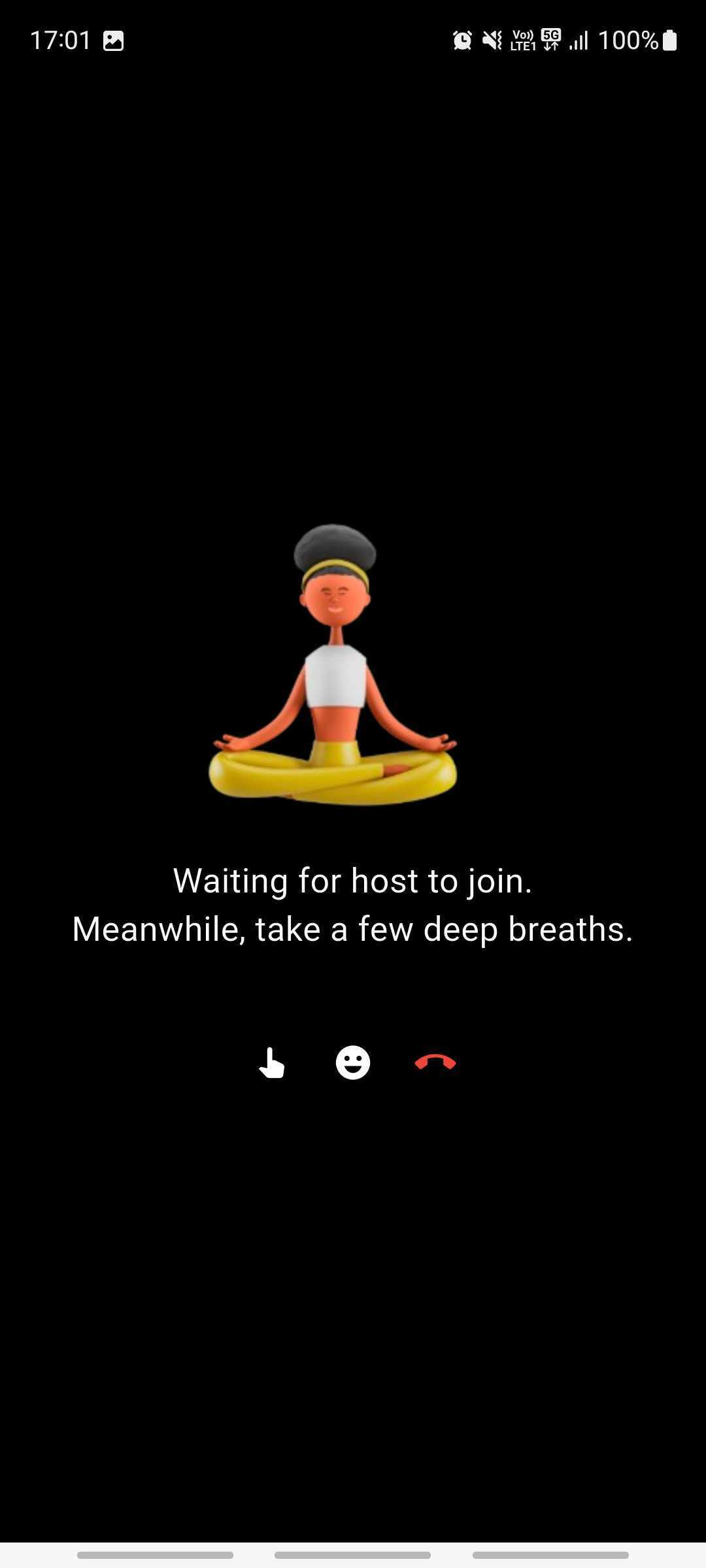Waiting Screen - Android
To create a smoother and more polished entry experience for audience members, it's important not to immediately render the meeting room when they join. Instead, show a waiting screen until at least one host is present in the room.
Why This Matters?
-
Hosts are typically responsible for driving the meeting, and their presence is essential before audience members should be able to view or interact in the room.
-
Allowing audience members (in RECV_ONLY mode) to enter a meeting with no active hosts (in SEND_AND_RECV mode) can result in confusion and a poor user experience.
Participant Modes
- Hosts must join the meeting with the SEND_AND_RECV mode.
- Audience members should join with the RECV_ONLY mode.
Implementation Guide
You can achieve this behavior by using the participants list and onParticipantJoined event from the Meeting class.
- Check if a Host is Present On initial render, use the participants object to determine if there's already a host in the room:
- Kotlin
- Java
val hasHost = meeting.getParticipants().values.any { it.mode == "SEND_AND_RECV" }
Log.d("Tag", "Has Host: $hasHost")
boolean hasHost = meeting.getParticipants().values().stream()
.anyMatch(p -> "SEND_AND_RECV".equals(p.getMode()));
Log.d("Tag", "Has Host: " + hasHost);
If hasHost is true, render the meeting view. Otherwise, show the waiting screen.
- Listen for Host Join Always listen for the onParticipantJoined event in case a host joins after the audience participant:
- Kotlin
- Java
override fun onParticipantJoined(participant: Participant) {
if (participant.mode == "SEND_AND_RECV") {
// Show meeting UI
Log.d("Tag", "Host joined. Show meeting view.")
}
}
@Override
public void onParticipantJoined(Participant participant) {
if ("SEND_AND_RECV".equals(participant.getMode())) {
// Show meeting UI
System.out.println("Host joined. Show meeting view.");
}
}
This ensures that as soon as a host joins, the waiting audience members are transitioned smoothly into the meeting view.

Got a Question? Ask us on discord

